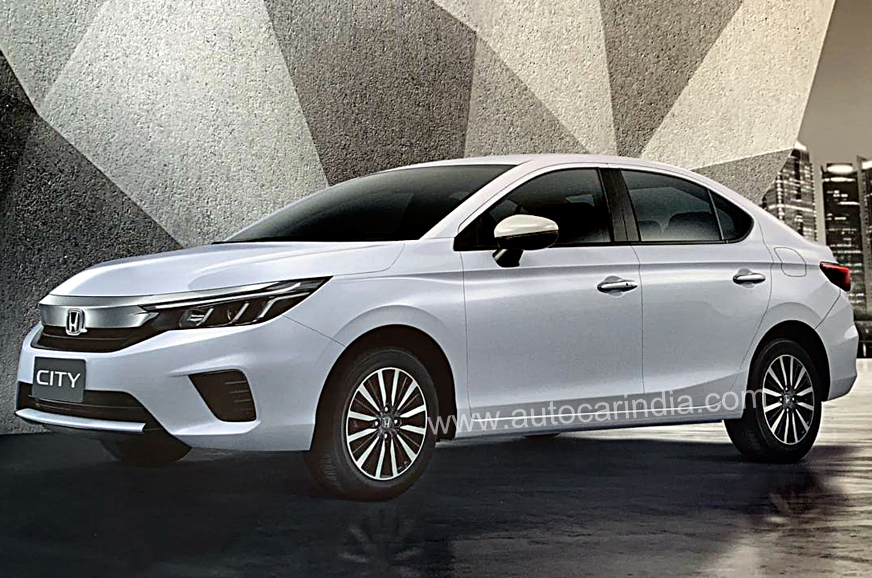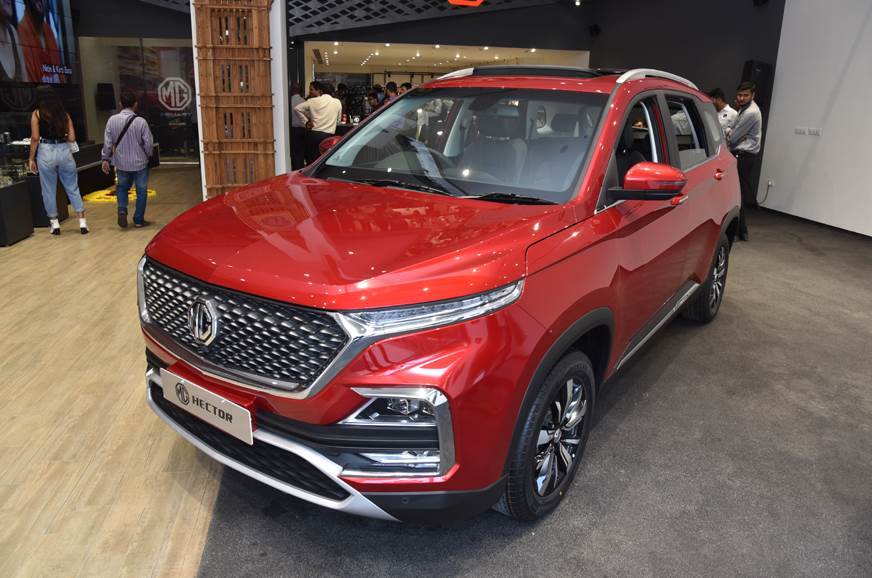
What you see here is the all-new, fifth-generation Honda City that has just made its debut in Thailand. Armed with a new look, a sportier cabin and new engines, the Honda City will come to India in 2020. So what’s the new Honda City like? Read to know all the details.
The 2020 Honda City is more than 100mm longer than the outgoing model, making it a fairly substantial car by mid-size sedan standards. The new City is also wider by 53mm but height is down 28mm. Interestingly, for its larger dimensions, the City also sits on an 11mm shorter wheelbase vis-à-vis the outgoing model.
The fifth-gen model gets fresh styling on the outside but the form is still easily recognisable as that of a City. Linking the City to the Civic and Amaze is the thick chrome band atop the grille that forms the focal point at the front. The grille comes flanked by wide and shaper-looking wraparound headlamps, embellished with LED projector units and daytime running lamps. What does take a bit away from the look is the simply-styled front bumper. Moving on to the sides, the new City gets a prominent character line that runs from the front door all the way to the back, eventually merging with the tail lamps. The doors get subtle creases at the bottom as well just like the outgoing model. At the rear, the City gets elongated taillamps with LED elements and a simple boot and rear bumper design with vertically positioned reflectors placed at each end. The City for the Thai market sits on 185/60 R15 tyres shod with multi spoke diamond cut alloy wheels. We expect the India-spec car to get a larger tyre size.
On the inside, the 2020 City gets an all-new dashboard layout that looks simple yet upmarket. The City on display sported an all-black interior but the India car could get a beige-on-black theme, perceived to be more premium in our market. Subtle doses of brushed aluminium and piano black trim help uplift the look of things on the inside.
The outgoing City’s asymmetrical dashboard has made way for a more conventional-looking console. The centre piece on the dashboard is a large 8.0-inch touchscreen that’s flanked by vertically-positioned air-con vents. Notably, Honda seems to have ditched the outgoing car’s touch panel-based climate control arrangement for a more user-friendly setup that includes three rotary dials. Honda has provided not one but two USB slots and a single 12V power socket for the new City. The three spoke steering wheel looks chunky with leather wrapping along with dedicated buttons for volume control, cruise control and Bluetooth telephony.
The new City also gets brushed aluminium pedals and a large dead pedal as well that also gets subtle brushed aluminium finish. As far as instrumentation goes, the new City continues to get twin analogue dials with red outlines and a decent-sized multi info display taking centre stage. The new City will continue to come with an Eco mode as well along with automatic start stop system.
Under the hood, the new 2020 Honda City for Thailand gets a 1.0-litre turbo petrol engine good for 122hp and 173Nm of torque. The sole transmission available for this engine is a CVT gearbox with paddle shifters on higher variants. This engine delivers an impressive 23.8kpl according to the Thailand test cycle. The new City will also get a fresh 1.5-litre petrol engine coupled with Honda’s compact i-MMD mild-hybrid tech that made its debut on the new Jazz recently. Honda has however not revealed any details of the said hybrid powertrain as yet. Additionally, for India, the new City will come with a 1.5-litre diesel engine as well just like its predecessor. This engine will be upgraded for BS6 emissions and will continue to see duty in the City and the Amaze in our market.
On the safety front, the new City comes with six airbags that include dual front, dual front side and dual curtain airbags. It also gets a multi angle rear view camera, ABS, EBD, Vehicle stability control and hill start assist.
The new 2020 Honda City will come to India after mid-2020 where it will see newer and updated rivals in the form of the heavily refreshed Hyundai Verna, the recently updated Vento, Maruti Suzuki Ciaz and Skoda Rapid. The City has been Honda’s backbone in India. In an era where sedans are falling in popularity, it’ll be interesting to see if the City can mirror the success of its predecessors.
Why Honda launched the City in Thailand?
The key reason for Honda to introduce the 1.0 turbo petrol engine is to qualify for the stringent Eco Car Phase 2 rules for the Thailand domestic market where the vehicle has to deliver CO2 emissions lower than 100g/km and also have a fuel economy figure not less than 23.25kpl among other requirements. The previous-gen Honda City saw its world premier in India back in late 2013 however Honda chose Thailand to unveil the 2020 City, thanks to Thailand’s Eco Car Phase 2 deadline where the qualifying vehicle has to go on sale before end of 2019 in order to meet local tax benefits.
Also see:
from Autocar India https://ift.tt/35xpHye
via IFTTT

No comments:
Post a Comment